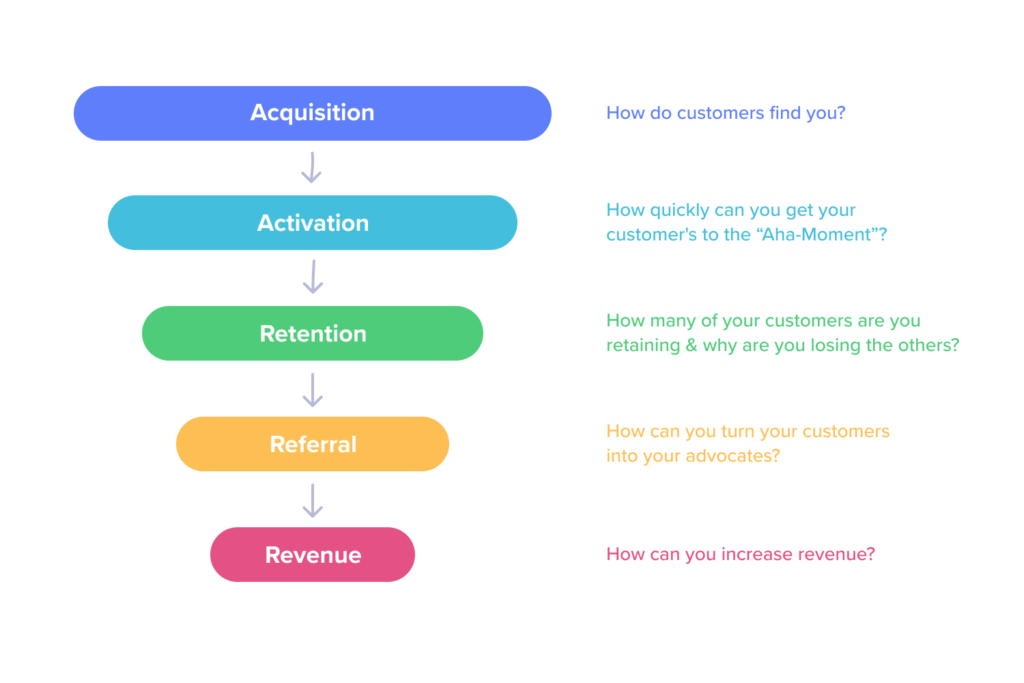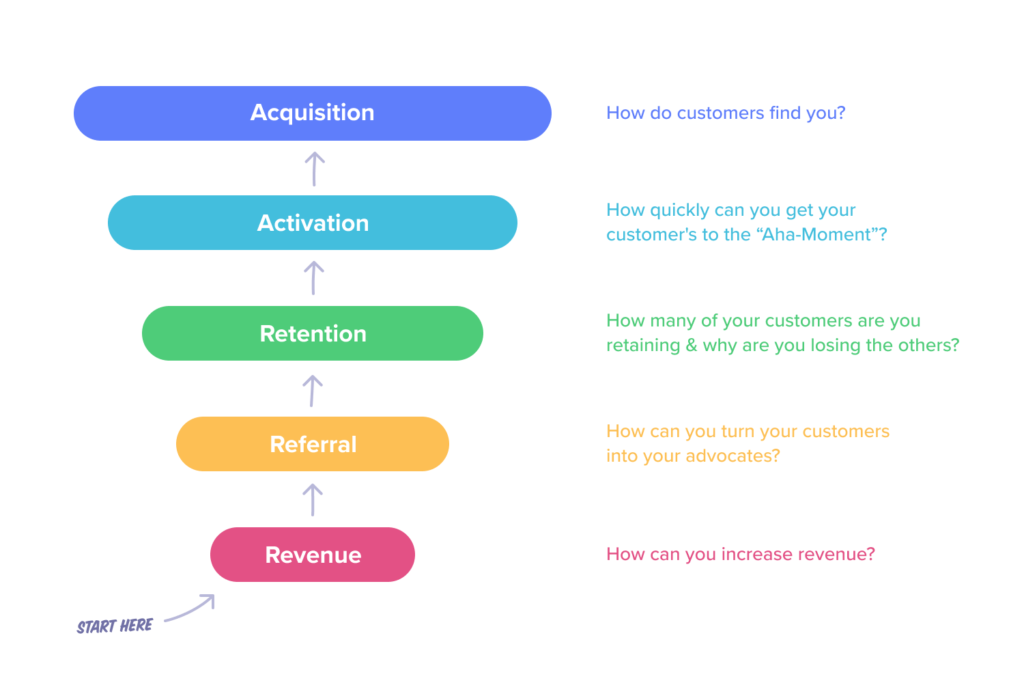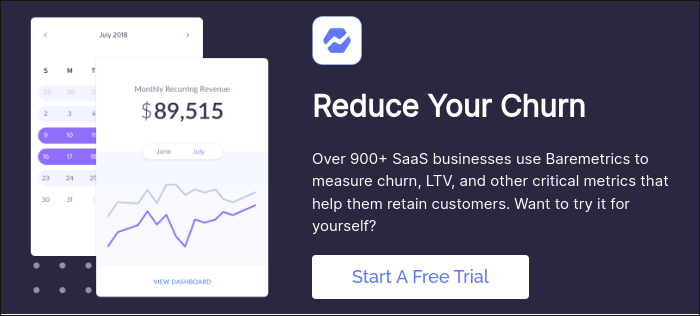Table of Contents
More Founders Journey Articles

This is the Baremetrics Growth Manifesto — the same one that sits in our internal wiki — that we use to guide everything we do that’s related to growth.
Why make this public?
Well, as you’ll read below, transparency is one of our core values.
We believe that sharing how we do things — our wins, struggles, strategies, etc. — is a rare and beneficial endeavor.
Ultimately, we believe that helping you grow helps us grow.
What Is Growth?
Before we start talking about growth in all its detail and intricacies, it’s important to establish what exactly we mean when we’re talking about growth.
I asked Twitter how they described their role in growth, and one stood out:
“I do whatever it takes across departments to help a business grow.”
— Hiten Shah (@hnshah) January 18, 2019
Growth is a discipline developed in the startup world that takes a very focused, systematic, and data-driven approach to activities that directly impact the growth of revenue.
Now, what impacts the growth of revenue for a business is going to vary on a case-by-case basis. We’re not going to pretend like we’ve come to the final and ultimate definition of what growth is.
It depends, just like many other crucial business functions.
How we think about growth at Baremetrics is as a blend of sales, marketing, and customer success.
Growth has the unique opportunity to think of the customer journey holistically, which blurs the lines of what used to traditionally only be sales’ job, only be marketing’s job, or only be customer success’s job.
The easiest way to illustrate this is with the AARRR framework, aka Dave McClure’s Pirate Metrics.

Traditionally marketing would handle “top of funnel” activities in the Acquisition stage to generate leads, sales or even customer success would handle the “bottom of funnel” activities in the Activation stage to convert leads, and customer success would handle activities in the Retention, Referral, and Revenue stage to keep customers. Growth engages all five stages and even works to create “loops” between once disparate stages.

Growth loops are more easily illustrated (and excessively referenced) in consumer products like Dropbox and Pinterest, for example, but are just as relevant to B2B SaaS, memberships, and subscription products.
A growth loop is a system for using the acquisition of one customer to acquire another customer. A growth loop can also be a system for using the retention of one customer to retain another customer.
Philosophy
Despite all this talk about acquiring customers, growth loops, etc., we propose that acquiring new customers actually shouldn’t be your first focus.
Focusing on acquisition before activation, retention, referral, and revenue results in your classic “Leaky Bucket” problem, where newly acquired leads and customers “leak out” of holes in the system because they aren’t properly engaged, activated, or retained.
A starting MRR of $100,000, with $10,000 MRR growth, but with 12% revenue churn actually results in a contraction in MRR. Acquisition without retention results in failed growth.

Focusing on retention… a modest growth rate of $5,000 MRR with only 3% revenue churn results in a positive gain in MRR.

Now, what if we optimized acquisition after retention?
Pairing $10,000 MRR growth with 3% revenue churn results in massive gains.

This is why we advocate for a bottom-up approach to growth.

Start with the Revenue stage, then move to Referral, then Retention, then Activation, and once all of those are optimized, THEN focus on Acquisition. Here are some examples:
Working on Revenue — turning free users into paying users, up-selling and cross-selling, expansion to higher tier plans — can create negative churn, which means that you’re not losing any revenue at all to churn, in fact, you’re gaining revenue.
Working on Referral — creating referral programs, affiliate programs, encouraging collaboration, making a product that customers are proud of — reduces customer acquisition costs (CAC) and creates a passive stream of new customers.
Working on Retention — encouraging adoption, onboarding correctly, educating customers on how to get the most value, fixing bugs, shipping new features — reduces churn and increases their lifetime value.
Working on Activation — leading customers to the “aha” moment, converting trial users, converting deals, showing why your product is the best solution for their problem — increases conversion rate and properly communicates the value of your product.
Working on Acquisition — bringing awareness of your solution to the market, generating demand for your product, creating new trial users, creating new deals — increases the number of qualified customers you can introduce to your product.
Working “bottom-up” makes for a firm growth foundation and helps to retain the optimal amount of revenue growth possible.
Principles
This is a list of principles that guide the way we plan and execute growth at Baremetrics.
- Transparency– Internal and external communication will be honest. Financial and marketing performance are public. Struggles, lessons learned, and wisdom will be given freely. Conversation will be free of politics, shame, and hidden intentions.
- Do things that don’t scale– Don’t be afraid to put in the work and go the extra mile for something that you know will make a difference, regardless of its “scalability.”
- Reduce friction– We refuse to force people to hurtle obstacles and jump through hoops just to talk with us. We also strive to make every process and product experience as streamlined as possible.
- Honesty– We won’t lie about our features, use tactics to trick users, exaggerate to make ourselves seem more impressive, or pretend to be a company that we’re not. What you see is what you get.
- Benefits > Features– In everything that we say, do, and show, we must answer “how does this help the customer?” Focus on what the feature enables someone to do, not what the feature is or is able to perform.
- No jargon – Write with simple words. Unless 99% of our customers would know the word, don’t use it. Also, limit the use acronyms when possible.
- Be storytellers– Story is the most natural way we understand things. We will not be clinical or cliche. Every word, phrase, and sentence will be crafted. We will write like we talk, and do it with excellence.
- Be specific –Make it easy for people to do exactly what you want them to. Leave nothing to interpretation.
- Be human– Let is not forget that we do not sell to organizations, we sell to people. Each of us is human. And we will treat each other with love and respect.
- Customer-driven, not company driven – Think first for the customer, their needs, and their desires.
- Be proud– Whatever you do, be 100% proud of it. Just go do or make something you’re happy to stamp your name on.
- Trust is everything – Trust is our greatest asset with our customers. Any behavior that could break trust must be out of the question.
- Everything is marketing – Each and every one of us are marketers. Marketing is also the way we communicate product changes, the way we answer support, and the way we talk about our customers.
- Simplicity– Every word said, feature created, process made, design drawn, and code written is done with simplicity in mind.
- Innovation– Screw consensus. Go big. Make bets. Take ownership. And think outside the box. The words “that’s just how it is” aren’t in our vocabulary.
Drift also has a fantastic marketing manifesto to draw inspiration from for your own business.
Process
I’ve come to adopt a process outlined by the folks at GrowthTribe called G.R.O.W.S.
1 . Gather (G of G.R.O.W.S)
- Brainstorm freely. There’s no such thing as a bad idea. Just write it down.
- Center around objective (Acquisition/Activation/Retention/Referral/Revenue)
- Start with three key criteria:
- Name
- Hypothesis
- Metrics to be measured
2 . Rank (R of G.R.O.W.S)
- Score experiments by impact, confidence, and effort (or other preferred framework)
- Order experiment ideas by ICE scores
- Determine:
- Resources/time available
- Time to market
- Buy in from other

3. Outline (O of G.R.O.W.S)
- Create a one-page brief that elaborates on what you’ve already written down about it and then goes into detail about how you will execute it.
- Make sure everyone knows what they are doing and who is responsible for what.
- Reverse engineer all the necessary components into a full list of things to do to go in your project management tool.
4 . Work (W of G.R.O.W.S)
- SHIP
- Ensure measurement is in place
- Give it enough time to test and know when you’re able to come to a conclusion
5. Study (S of G.R.O.W.S)
- Determine results:
- Worked
- Didn’t work
- Inconclusive
- Discuss learnings:
- What should we start doing?
- What should we stop doing?
- What should we continue doing?
The Mission
Our mission is to equip businesses with the tools they need to grow.
By providing tools, insights and education with minimal effort on the business’s part, the barrier to making actionable business decisions is lowered dramatically.
Everything we do is driven by this mission. Everything we do — products and features created, content produced, ads run, resources made — needs to positively answer the question, “Does this help businesses grow?”



